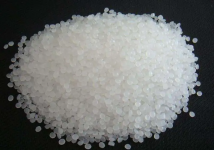read: 893 time:2025-07-17 12:33:58 from:化易天下
When it comes to surface finishing, nickel plating is a popular choice due to its durability, corrosion resistance, and aesthetic appeal. However, situations may arise where the removal of nickel plating is necessary. A common question in such cases is, "Will acetone remove nickel plating?" This article delves into the effectiveness of acetone in removing nickel plating and explores alternative methods for this process.
Nickel plating involves the deposition of a thin layer of nickel onto a metal surface, usually through an electroplating process. This plating enhances the metal's resistance to wear and corrosion, while also providing a shiny, attractive finish. Given its protective properties, removing nickel plating requires a method that can break down the nickel layer without damaging the underlying material.
Acetone is a widely used organic solvent, commonly found in nail polish remover, paint thinners, and various cleaning agents. It is effective at dissolving oils, greases, and some types of organic materials. However, when it comes to metals, acetone's effectiveness is more limited. It does not have the chemical properties required to break down or dissolve nickel, which is a much more robust and stable element.
The short answer to the question, "Will acetone remove nickel plating?" is no. Acetone is not strong enough to dissolve or remove nickel plating. Nickel is a transition metal that forms a strong bond with the substrate it coats, and breaking this bond requires a much stronger chemical reaction than what acetone can provide. Acetone might clean the surface by removing any organic contaminants, but it will not affect the nickel layer itself.
Since acetone cannot remove nickel plating, other methods must be considered. The most effective techniques typically involve stronger acids or electrochemical processes:
Chemical Stripping: Strong acids like hydrochloric acid or sulfuric acid, often mixed with other chemicals, can effectively strip nickel plating. These solutions are highly corrosive and must be handled with care, typically in a professional setting.
Electrolytic Removal: Electrolytic stripping involves reversing the electroplating process. By submerging the nickel-plated object in an electrolytic bath and applying an electrical current, the nickel can be removed in a controlled manner. This method is precise and can preserve the underlying material.
Mechanical Removal: In some cases, mechanical methods such as abrasive blasting or grinding can be used to remove nickel plating. This method is more aggressive and may damage the substrate, so it should only be used when chemical or electrolytic methods are not feasible.
In conclusion, acetone is not effective for removing nickel plating. Its inability to break down the nickel layer means that alternative methods must be used for this purpose. When facing the challenge of removing nickel plating, chemical stripping or electrolytic removal are generally the most effective and safest options. Understanding the limitations of acetone in this context can help in choosing the right approach for removing nickel plating from surfaces.

Jincheng Petrochemical's 300000 ton polypropylene plant successfully trial production, 2024 polypropylene market analysis

The ABS market remains sluggish, what is the future direction?

Market differentiation of bisphenol A intensifies: prices rise in East China, while prices generally decline in other regions

The production method and process flow of silicone acrylic lotion, and what are the common raw materials